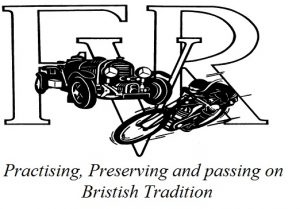The passing of a master
One of Britain’s greatest motorsport racers has died. Stirling Moss came to the fore because of the post-war boom in motor racing and in the 1950s, he became a household name. He epitomised the complete racing driver.
The son of Alfred, who himself was a racer having driven at Brooklands and at Indianapolis where he finished 14th in 1924 in a Fronty-Ford, and mother Aileen, who drive a Marendaz and other cars in trials in the 1930s, winning the Ladies Expert Trial in 1935 and 1936, Stirling began racing in 1948 at the age of 18. His first season netted him 10 class victories in British hillclimbs in his Cooper-JAP.
By 1950 he had graduated to more powerful machines, driving a 2.0 litre HWM as well as a Jaguar XK120, winning the Tourist Trophy that year, his first major victory. Aged just 20, he was rewarded the first of 10 Gold Stars by the British Racing Drivers Club.
However, he wasn’t proficient in just circuit racing driving HWMs, a Formula 3 Kieft, Jaguar and Frazer Nash sports cars, but also in rallying. He won the Coupe des Alpes in the Alpine Rally in 1952, 1953 and 1954.
By this time, he was offered the opportunity to drive for Ferrari, but he was determined to drive British cars, a decision which delayed his rise to the top, but in mid-1954, he accepted an offer from Maserati to drive the 250F. He soon came to the notice of Alfred Neubauer of Mercedes-Benz who signed him up for the 1955 season as number two driver to Fangio.
At the wheel of different grand prix cars and sportscars he won the Mille Miglia, Targa Florio, Tourist Trophy and the British GP and was second in the Belgian, Dutch and Buenos Aires GPs, in the Swedish sportscar GP and Eifelrennen. He was runner-up to Fangio on the World Championship.
With the Mercedes withdrawal from motorsport following the horrific Le Mans accident in 1955, Moss went back to driving Maseratis in sportcars and grands prix plus a variety of other cars. He was runner-up in the Drivers’ Championship in 1956, 1958 and 1961 and third in 1959 and 1960, but his proudest moment was winning the British GP in 1957 driving a Vanwall. This was followed up by victories in the Pescara and Italian GPs, also in a Vanwall. The following year, driving a Rob Walker Cooper, he won the Argentinian GP, the first World Championship race won by a private owner. He then won the Dutch and Moroccan GPs in a Vanwall, ultimately losing out by one point to Mike Hawthorn who won that year’s World Championship in a Ferrari. At the end of the year, the Vanwall team was disbanded following the ill health of team owner and patron Tony Vandervell.
In 1959 Moss campaigned a Rob Walker Cooper-Climax, scoring a number of wins but it was in 1960 when he drove for Lotus, winning the Monaco GP and finishing fourth in the Dutch. Then bad luck set in, crashing badly in practice in the Belgian GP, breaking both his legs and nose and crushing nine vertebrae. However, just 50 days later, he was back behind the wheel of a brand-new Lotus-Climax, winning the Karlskoga GP sportscar race. At the end of the season he went on to win the grands prix at Watkins Glen and Riverside and sportscar races at Laguna Seca and Riverside.
His last full season was in 1961 winning the German, Monaco and Modena GPs in his privately owned Lotus-Climax 18 and the Tourist Trophy in a Ferrari. He also gave the 4wd Ferguson its fist win in the Oulton Park Gold Cup.
1962 was when disaster struck. He won the New Zealand, Australian and the Goodwood Easter Meeting. However, it was in the Glover Trophy that the life-threatening and career-ending happened when his car, a 1.5-litre V8 Lotus, inexplicably spun out of control. While he did recover, damage to the brain meant that he lost his ultra-sharp reactions.
As Nick Georgano wrote in his book The Encyclopaedia of Motor Sport, published by Ebury Press and Michael Joseph in 1971: “Not only was he the fastest driver in his day, but almost the most perfect…….As an individual he was a remarkable man, well above the average in eyesight, reflexes and judgement, and was always on top of his form, unlike some of his rivals who had off days. Moss was never known to put up a mediocre performance with a racing car, whether he was leading or in last position due to come mechanical fault. He always considered that he earned money by people paying to see him drive, and therefore it was up to him to give them value for money at all times, which is a refreshing outlook compared to some drivers. The only man to whom he admitted inferiority was Fangio, but only then in a single-seater GP car. His special ability was that he could make any car to do what he wanted, whereas most racing drivers adapt themselves to what the car fundamentally wants to do when cornering. From the first racing car he drove, a Cooper-JAP, to the last, a Lotus-Climax V8, Moss was always the master of his machine.”













